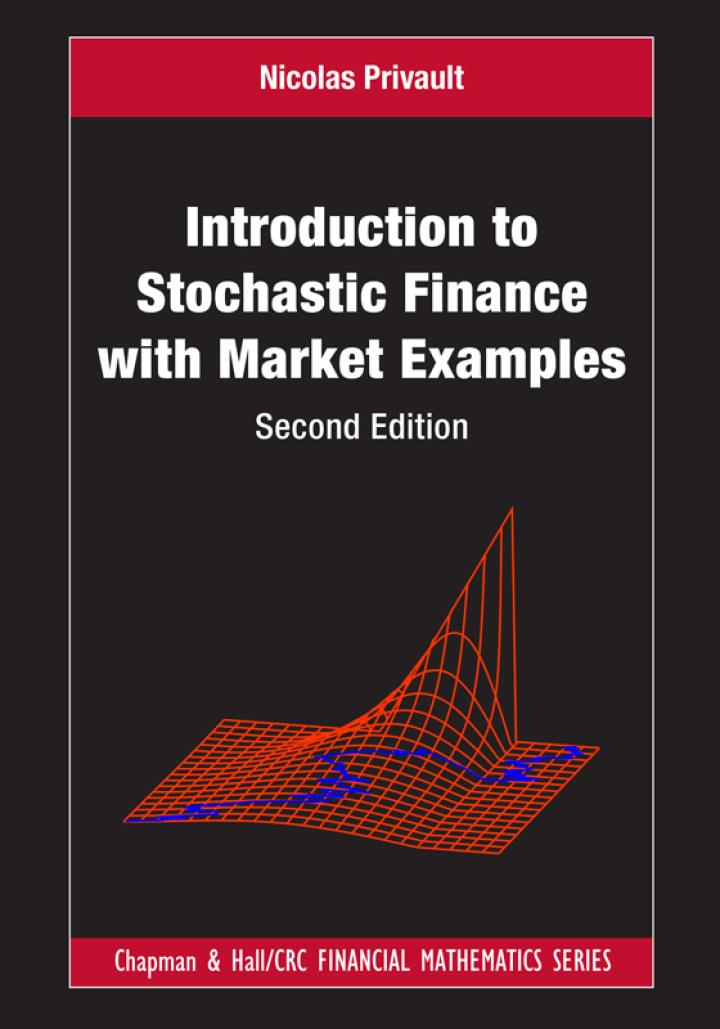We consider a riskless asset valued (S_{1}^{(0)}=S_{0}^{(0)}), at times (k=0), 1 , with risk-free interest rate is
Question:
We consider a riskless asset valued \(S_{1}^{(0)}=S_{0}^{(0)}\), at times \(k=0\), 1 , with risk-free interest rate is \(r=0\), and a risky asset \(S^{(1)}\) whose return \(R_{1}:=\left(S_{1}^{(1)}-S_{0}^{(1)}ight) / S_{0}^{(1)}\) can take three values \((-b, 0, b)\) at each time step, with \(b>0\) and
![]()
a) Determine all possible risk-neutral probability measures \(\mathbb{P}^{*}\) equivalent to \(\mathbb{P}\) in the sense of Definition 1.5 in terms of the parameter \(\theta^{*} \in(0,1)\), from the condition \(\mathbb{E}^{*}\left[R_{1}ight]=0\).
b) We assume that the variance \(\operatorname{Var}^{*}\left[\frac{S_{1}^{(1)}-S_{0}^{(1)}}{S_{0}^{(1)}}ight]=\sigma^{2}>0\) of the asset return is known to be equal to \(\sigma^{2}\). Show that this condition provides a way to select a unique risk-neutral probability measure \(\mathbb{P}_{\sigma}^{*}\) under a certain condition on \(b\) and \(\sigma\).
Step by Step Answer:

Introduction To Stochastic Finance With Market Examples
ISBN: 9781032288277
2nd Edition
Authors: Nicolas Privault





